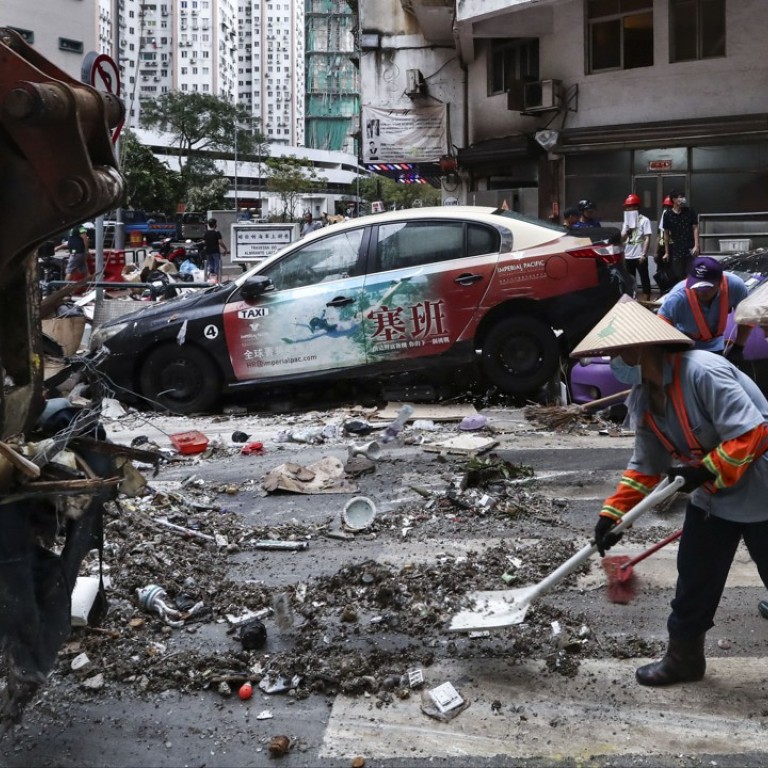
Super Typhoon Mangkhut: one year on from Hato’s deadly hit, is Macau any better prepared to handle a monster storm? Lawmakers have their doubts
Communication has improved and some precautions have been taken, but concerns over infrastructure remain more than 12 months after 10 died in 2017 super typhoon at casino hub
The monster storm is expected to hit the city this weekend, and while communication with residents in the former Portuguese enclave has markedly improved, there are doubts over whether infrastructure will stand up to the more than 200km/h winds expected to batter China’s coast.
Last year, 10 people died in the worst storm to hit Macau in more than 50 years. Streets were flooded, water and electricity supplies cut off and, for the first time, troops from the Chinese army were deployed in the city to help clear up.

The Macau government was criticised for its poor response to Hato. Chief Executive Fernando Chui Sai-on made a public apology for being ill-prepared, and Fong Soi-kun resigned as director of the Macau Meteorological and Geophysical Bureau. Chui formed a committee to review and improve the government’s mechanisms in facing severe disasters.
Compared with last August, when the super typhoon hit, some of Macau’s lawmakers said the government had been better at keeping the public up to date this time around.
“Much more information has been disseminated prior to the arrival of the storm,” said lawmaker Sulu Sou Ka-hou, noting public awareness of how best to prepare had improved as well.
“All departments related to disaster prevention have told the public what they have done.”
Sou said it had also been made clear which areas were expected to flood.
“Now they have told you earlier … this could help reduce casualties,” he said.
But Sou said the city’s infrastructure for defending against the natural disaster was still “disappointing”.
Grieving Macau residents recount horror of Typhoon Hato
He said the government had made plans to strengthen its infrastructure after Hato, such as by building more storm water pumping stations and adding tide gates at the Inner Harbour, but none of those facilities had been completed yet.
Another lawmaker, Au Kam-san, said that since it usually took several years to complete construction on a public works project, the government could only currently work on more immediate measures to reduce the impact of typhoons, such as setting up emergency shelters and being better prepared for when people use them.
“Not much was done on hard infrastructure. What they could focus on is soft infrastructure,” Au said.
The heroes of Hato: how Hong Kong firemen braved floods to rescue villagers
But he said the government should improve its long-term public education work on disaster response rather than releasing relevant information only when typhoons approach.
Lawmaker Jose Pereira Coutinho agreed the government had been “more concerned” with making the public aware of the storm, but said flooding could still happen without improvements to physical infrastructure.
Power supplier Companhia de Electricidade de Macau said it had implemented flood-control measures in low-lying areas, and expected such measures to “improve Macau’s disaster resilience”.
Some of the work had included raising the position of power equipment and installing flood barriers in customer substations.
The Macao Water Supply Company said it had installed watertight doors on pumping stations and mechanical rooms at its two water treatment facilities, and had increased the height of waterproof gates.
“The upcoming typhoon will be a good test to see how [effective] all those measures are,” Coutinho said.

